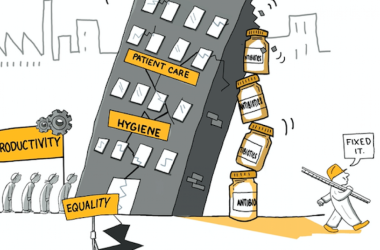Never have two words changed a society, especially one like ours that resists change so intensely, as much as ‘social media’. For young people (and many of their parents), their existence begins and ends with social media. From sexting to hacking, the playground has morphed into a battlefield,” writes Jyotsna Mohan Bhargava in her new book of non-fiction titled Stoned, Shamed, Depressed: An Explosive Account of the Secret Lives of India’s Teens (2020) published by HarperCollins India.
There is a lot of popular writing on the impact of Facebook, Instagram, TikTok, Snapchat, WhatsApp and PUBG on school-going students but it tends to focus on how adults perceive the situation. What sets this book apart is the author’s interest in listening to and presenting what teenagers have to say about their own lives. She focuses on the physical and mental health conditions experienced by them as a result of social media addiction and its associated perils: body shaming, peer pressure, cyberbullying, sexual harassment, and drug abuse.
Bhargava remarks, “I decided to write about the experiences of teens and the world that they inhabit because often we forget to listen to the voice of our children. These days, in many homes around the country, there are fewer family conversations.” As one explores each of the six chapters in this book, it is clear that the people represented here come from affluent urban families. As mentioned in the introduction, the scope of this book is limited to “the compulsions of those who are materially well-off, where everything is on a platter yet never enough.”
Having worked with NDTV for 15 years, both as a senior news anchor and editor, Bhargava brings her journalistic skills to this book that creates a sense of high-pitched drama from the beginning. The author brings in perspectives from school principals, paediatricians and psychiatrists to layer the story she wants to tell. The cover designed by Gavin Morris grabs attention almost immediately because it evokes shock, curiosity and terror all at once, through the juxtaposition of visual elements revealed later in the book.
Stoned, Shamed, Depressed can be disturbing for some parents, teachers and caregivers because it reveals nightmarish details about the risks that teenagers are exposed to on a daily basis as they navigate their offline and online worlds. Bhargava learnt from her field research that social media accounts are hacked by classmates, nude photographs are circulated without consent, and students receive rape threats from people of their own age. Drugs are sold on campuses, and e-cigarettes are common in the absence of teachers.
Many teenagers use social media, drugs and alcohol to cope with stress. One of them, interviewed by Bhargava, shares that he was applauded by his school for scoring the highest marks in his final exams but he considers himself a failure. Soon after the results were announced, he started going for counselling. He says, “When the pressure to perform was so high, I think I was so busy studying that life just went by and I was left with no friends or people around me….Even if I approach people, they can’t see me or my troubles. My goals were set for me to achieve but was it mandatory for me to be this isolated and lonely?”
While some parents are mortified because they do not know what course of action to take in order to support their children, others underplay the damage or pretend that it does not exist. Bhargava quotes a girl who has undergone cosmetic surgery while still in school. She says, “My parents paid for it and I didn’t have to convince them because I have always been insecure. Plus, my mom has implants anyway.” The mother of a boy, who was rusticated from school for sexually harassing a girl via relentless sexting, tells him, “You did nothing wrong, your only mistake was that you got caught.” Clearly, parents themselves are struggling to cope.
The strength of this book lies in providing descriptive accounts, sensitising readers to a gamut of challenges encountered by teenagers, and flagging specific concerns that policymakers can attend to. It does not offer much in terms of easily implementable solutions, so adults looking to be rescued from a horrific scenario might be disappointed. What they might find beneficial is the wake-up call this book is meant to be because Bhargava consolidates the expertise of professionals who point out how teenage lives and adult lives are deeply interconnected.
She writes, “There are concerns that kids who choose to share genuine mental health disorders on social media could find themselves in an unpleasant situation by being bullied for sadfishing. They simply do not realise that cyberspace is not their shrink, perhaps because they emulate what they see around them. If a father is ‘checking-in’ to a hospital first on Facebook, or a role model uploads an image of an accident, the children will also believe that their every breath needs to be validated through social media.”
It is true that parts of this book could come across as extremely patronising. The generation gap is not a new phenomenon. Parents of every generation have a hard time trying to make sense of the rapidly changing world they raise their children in. Instead of alleviating their anxiety, Bhargava’s book might only worsen it. That said, her book is meant to be a reality check, not a sugar-coated pill.
Chintan Girish Modi is a writer, educator and researcher who tweets @chintan_connect.


